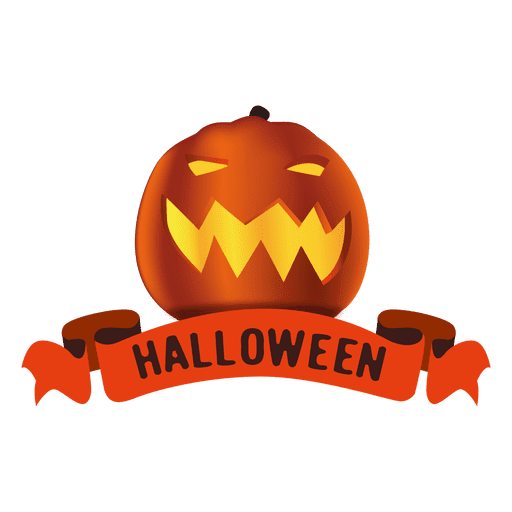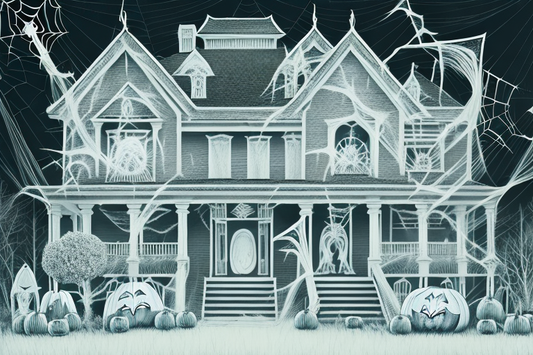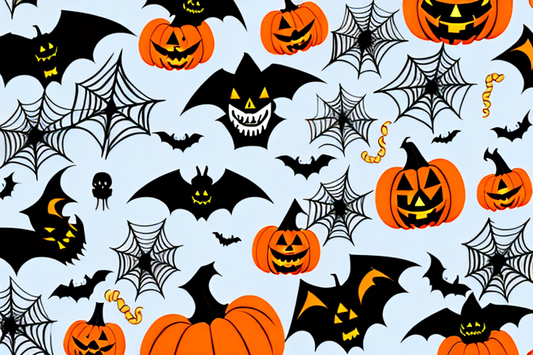What actually is Halloween and why do we celebrate it?
Halloween, also known as All Hallows' Eve, is a holiday celebrated annually on the 31st of October. It's a day filled with costumes, candy, and spooky festivities, but have you ever wondered where it all began? In this comprehensive exploration, we delve into the origins, traditions, and modern-day celebrations of Halloween.
The Origins of Halloween
The roots of Halloween can be traced back to the ancient Celtic festival of Samhain, celebrated over 2,000 years ago. The Celts, who lived in the area that is now Ireland, the United Kingdom, and northern France, celebrated their new year on November 1. This day marked the end of summer and the harvest and the beginning of the dark, cold winter, a time of year that was often associated with human death.
On the night of October 31, they celebrated Samhain, when it was believed that the ghosts of the dead returned to earth. In addition to causing trouble and damaging crops, Celts thought that the presence of the otherworldly spirits made it easier for the Druids, or Celtic priests, to make predictions about the future.
Transition to All Hallows' Eve
With the spread of Christianity, the early church sought to incorporate some of the traditions of the Celtic festival into their own celebrations. November 1 was designated as All Saints' Day, a time to honor saints and martyrs. The day was also known as All Hallows, and the night before, the traditional night of Samhain, began to be called All Hallows' Eve, and eventually, Halloween.
By the 9th century, the influence of Christianity had spread into Celtic lands, where it gradually blended with and supplanted older Celtic rites. In 1000 A.D., the church made November 2 All Souls' Day, a day to honor the dead. It was celebrated similarly to Samhain, with big bonfires, parades, and dressing up in costumes as saints, angels, and devils.
Traditional Halloween Customs and Practices
Many of the customs and practices associated with Halloween have their roots in these ancient celebrations. For instance, the tradition of dressing up in costumes and going door-to-door can be traced back to the Celtic practice of impersonating evil spirits. The Celts believed that if they dressed up as demons and roamed the streets making a lot of noise, they would scare off the real demons.
Another popular Halloween tradition, the carving of jack-o'-lanterns, has its roots in an Irish myth about a man nicknamed "Stingy Jack." According to the story, Jack tricked the Devil into climbing a tree and trapped him there by carving a cross into the tree trunk. In revenge, the Devil cursed Jack to roam the earth at night with only a burning coal to light his way. Jack put the coal into a carved-out turnip and has been roaming the earth ever since. The Irish began to refer to this ghostly figure as "Jack of the Lantern," and then, simply "Jack O'Lantern."
Trick-or-Treating
The practice of trick-or-treating is thought to have originated with a ninth-century European custom called souling. On All Souls' Day, early Christians would walk from village to village begging for "soul cakes," which were square pieces of bread with currants. The more soul cakes the beggars would receive, the more prayers they would promise to say on behalf of the dead relatives of the donors. It was believed that the dead remained in limbo for a time after death, and that prayer, even by strangers, could expedite a soul's passage to heaven.
Over time, this practice evolved into children visiting homes in their neighborhood and being given beer, food, and money. The tradition of trick-or-treating was brought to America by the Irish and became popular during the early 20th century, but died out during WWII due to sugar rations. It returned in the 1950s and has been a staple of Halloween celebrations ever since.
Modern Halloween Celebrations
Today, Halloween is celebrated in various ways around the world, with traditions and activities varying widely among countries. In the United States and Canada, traditional Halloween activities include trick-or-treating, costume parties, carving pumpkins into jack-o'-lanterns, lighting bonfires, apple bobbing, visiting haunted attractions, and watching horror films.
In some parts of the world, Halloween has a more religious connotation. In Mexico and other Latin American countries, Día de los Muertos—the Day of the Dead—honors deceased loved ones and ancestors with festivals and lively celebrations, a typically Latin American custom that combines indigenous Aztec ritual with Catholicism, brought to the region by Spanish conquistadores.
Halloween Around the World
In Ireland, where Halloween originated, the day is still celebrated much as it is in the United States. In rural areas, bonfires are lit as they were in the days of the Celts, and all over the country, children get dressed up in costumes and spend the evening trick-or-treating in their neighborhoods. After trick-or-treating, most people attend parties with neighbors and friends.
In England, Halloween is not celebrated as much as it is in other countries. The focus of the fall holidays is on Guy Fawkes Day, which is celebrated on November 5th. However, Halloween has become increasingly popular in recent years, with costumes and candy becoming more prevalent.
Conclusion
From its ancient Celtic roots to its modern-day celebrations, Halloween is a holiday steeped in tradition and history. Whether you celebrate by dressing up in a costume, carving a pumpkin, or watching a scary movie, Halloween offers a chance to embrace the spooky, the scary, and the fun.
So, the next time you don your costume and head out for a night of trick-or-treating, remember the ancient origins of this holiday and the many generations of people who have celebrated it before you. Halloween is more than just a night of candy and costumes; it's a link to our past and a celebration of the enduring spirit of human imagination and creativity.



